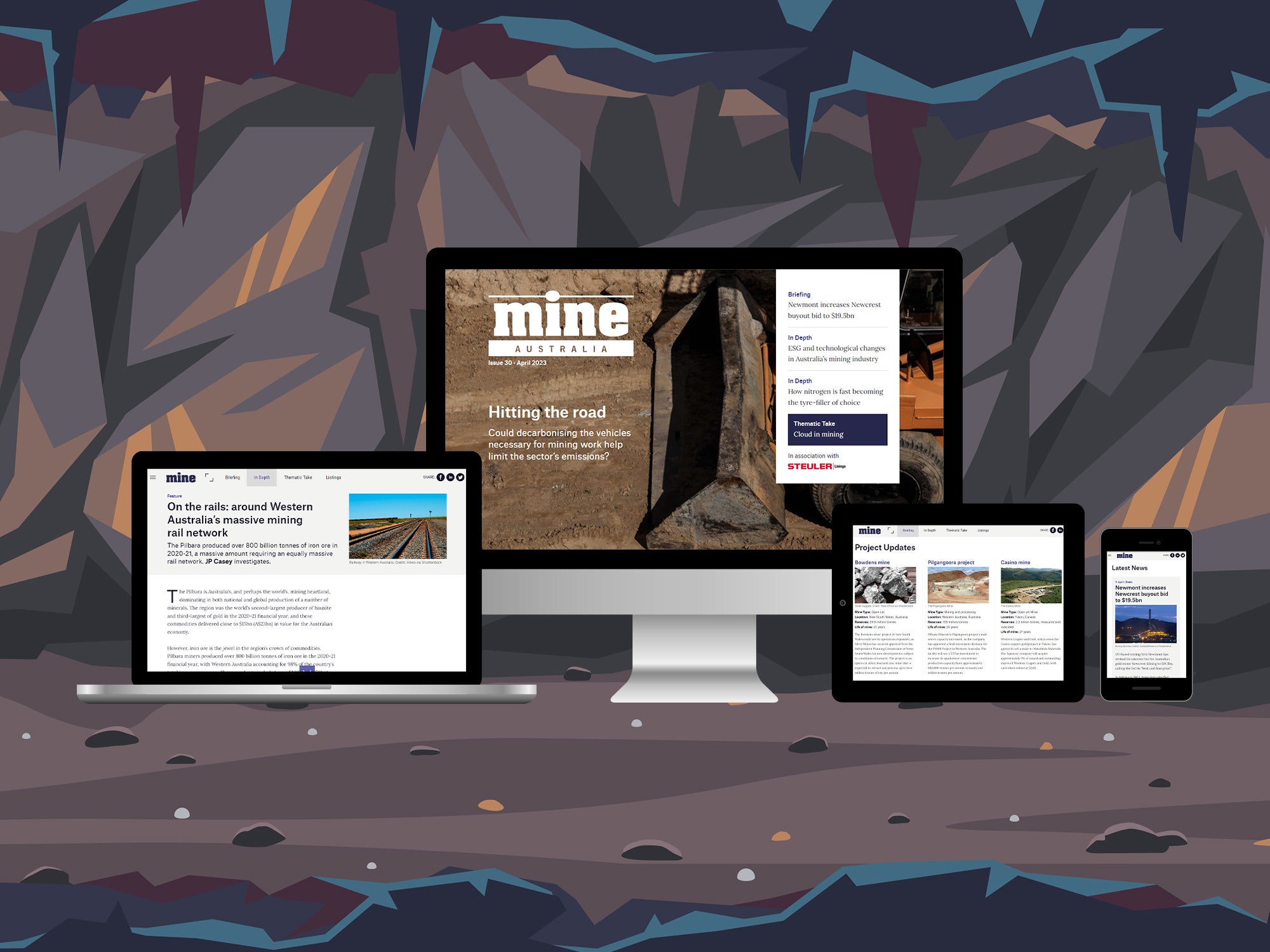
Minimising the environmental footprint of a mining project is a big ask, but there is plenty that could be done to reduce the emissions of the adjacent industries and processes that underpin many of these facilities. Chief among these is the idea of decarbonising a mine’s fleet of vehicles, a potentially massive change as each mine relies on the transportation of people, machinery and minerals across great distances.
Whether this takes the form of increased automation in mining vehicles, so they take more efficient paths and reduce fuel consumption, to replacing legacy vehicles with electric equivalents, there is plenty of scope for a miner to reduce the carbon footprint of its vehicles. The question remains, however, as to whether this will make a significant dent into that miner’s harmful emissions as a whole.
Elsewhere, we ask how the opposing priorities of critical mineral extraction and environmental, social and governance compliance can be balanced, and profile the vast rail network that connects the Pilbara’s myriad mines.
Whether you are on a desktop, tablet or smartphone, you can read the magazine for free online, and join the conversation on Twitter.
In this issue
Decarbonising fleets: an easy short-cut to climate targets?
With increasing numbers of companies looking to decarbonise their transport systems, Kit Million Ross investigates the potential of this solution.
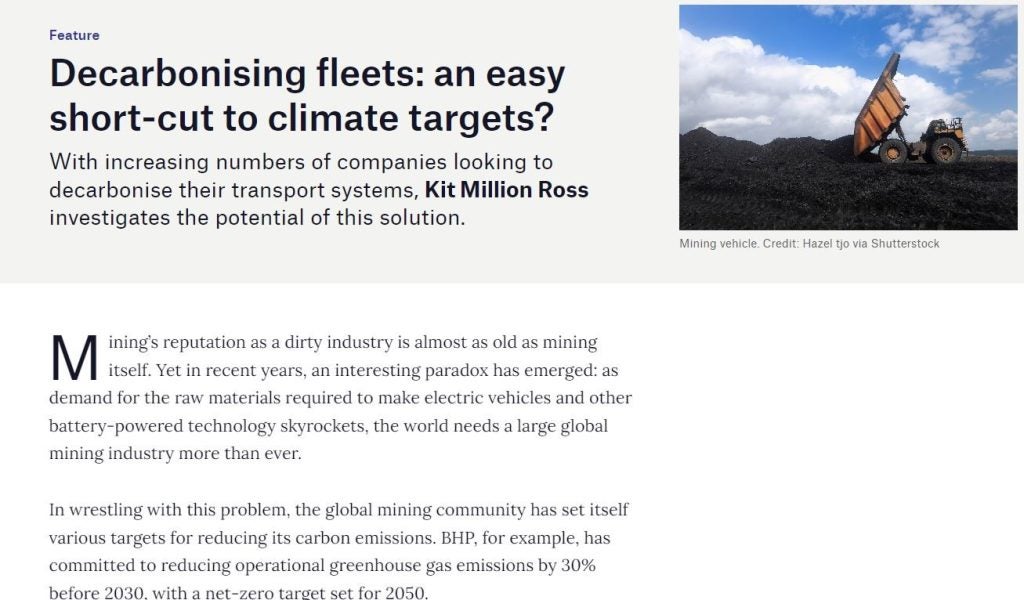
ESG and technological changes in Australia’s mining industry
Following Future Metals’ announcement of a “breakthrough” in mining and processing at its Panton mine, Smruthi Nadig investigates the ESG implications of critical minerals recoveries at the sites.
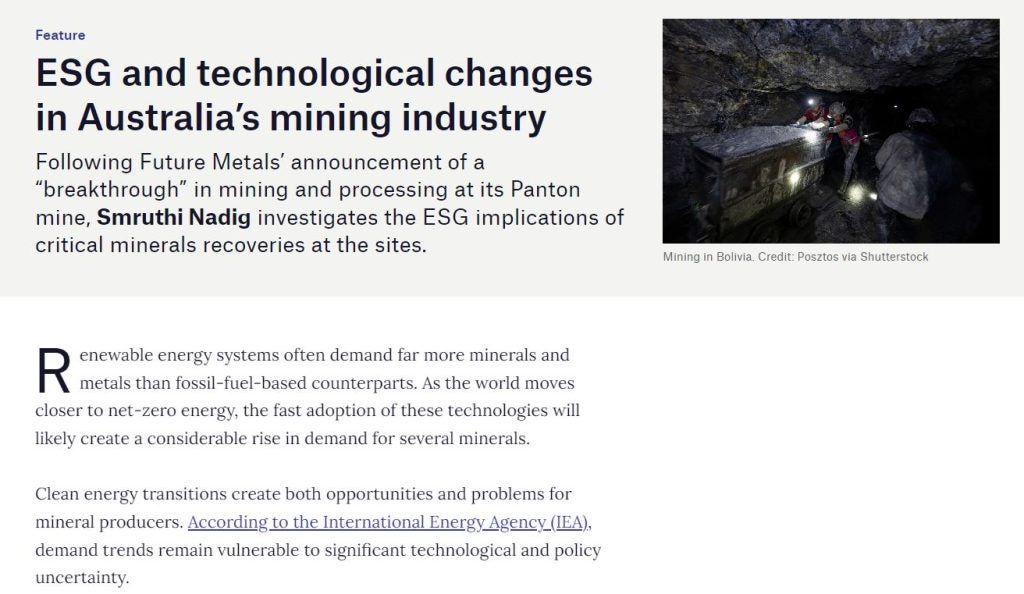
On the rails: around Western Australia’s massive mining rail network
The Pilbara produced over 800 billion tonnes of iron ore in 2020-21, a massive amount requiring an equally massive rail network. JP Casey investigates.
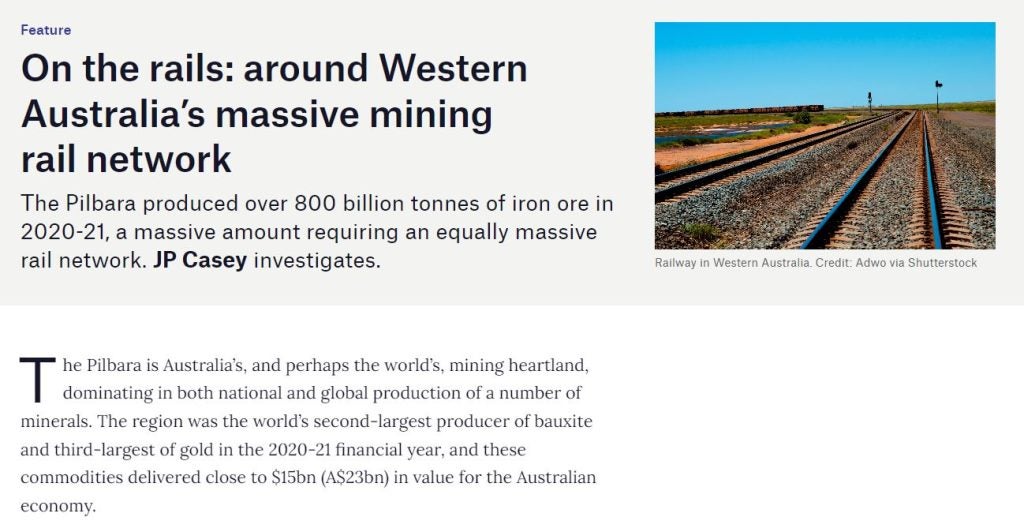
Automation in Australia: how the future of mining could change
Digitisation within the mining sector has become a growing point of focus for companies in recent years. Annabel Cossins-Smith looks at advancements in automated production.
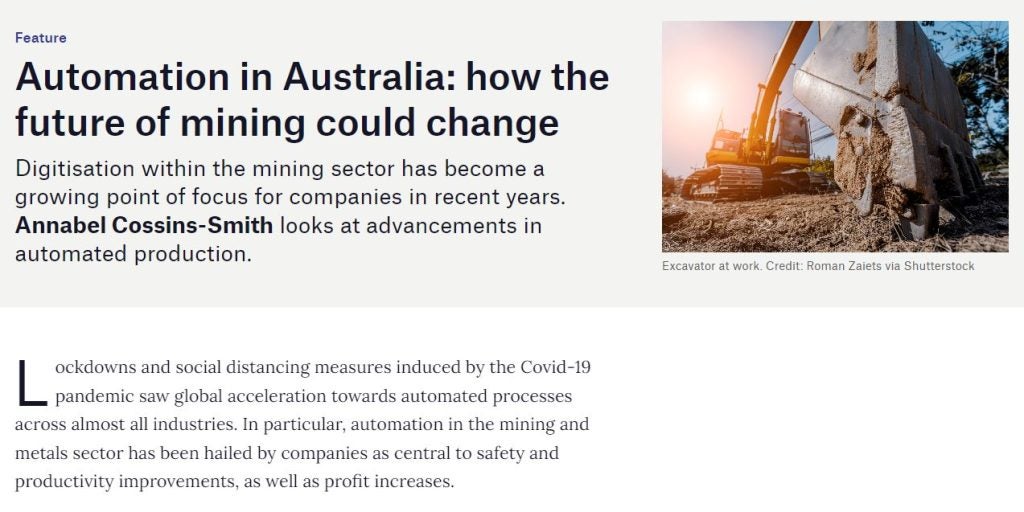
On a roll: how nitrogen is fast becoming the tyre-filler of choice
Fires at mines are a common concern, but, as Andrew Tunnicliffe finds out, there are options to minimise the risk by reducing the use of oxygen.
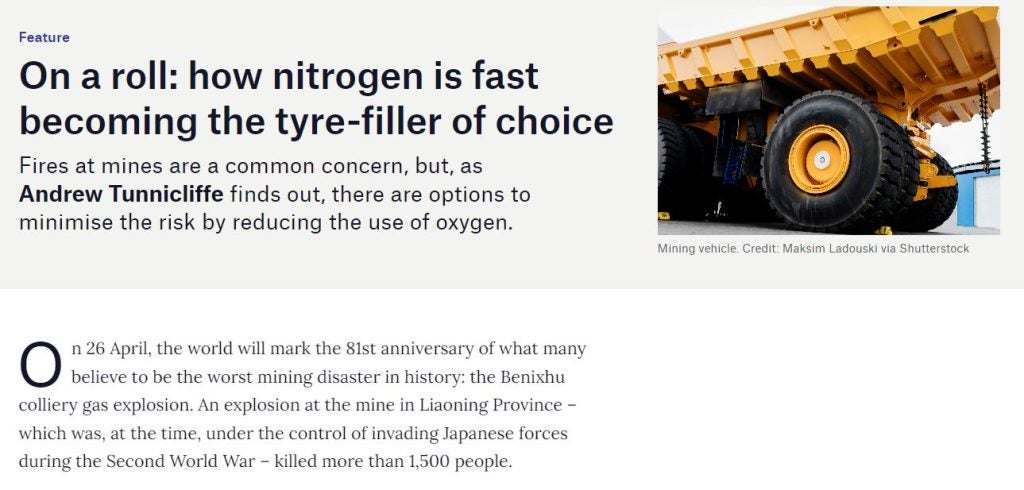
Thematic supplement
Future-proofing coal: could cloud technologies help coal survive in the UK?
As the UK steps back from abandoning coal, Nnamdi Anyadike considers the role of cloud technologies in this new future.
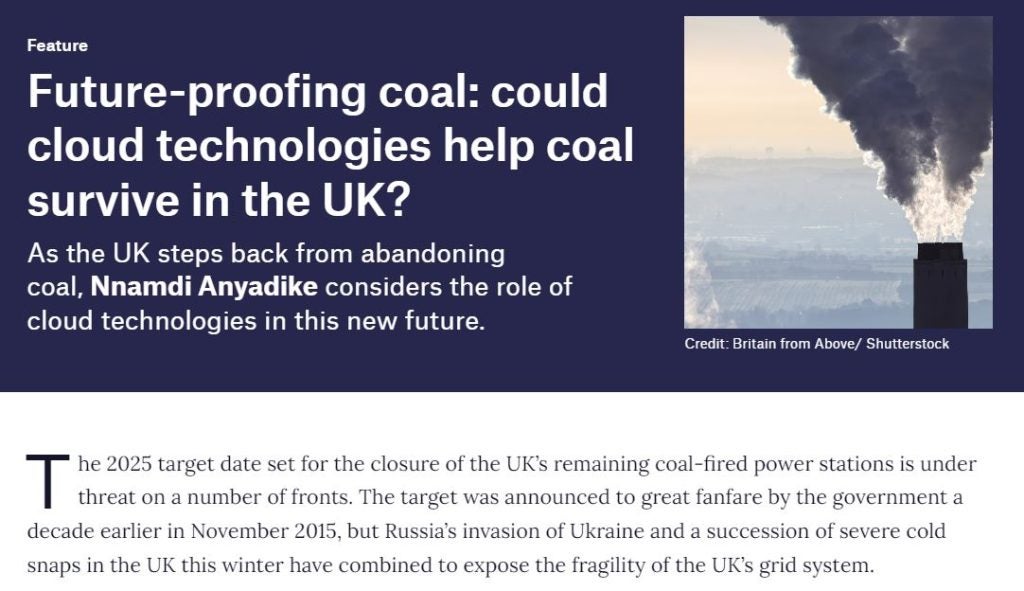
Changing the game: long-range Wi-Fi networks set for mining rollout
Andrew Tunnicliffe talks to the University of Sydney’s Professor Yonghui Li, about a project to develop industrial long-range high-speed Wi-Fi.
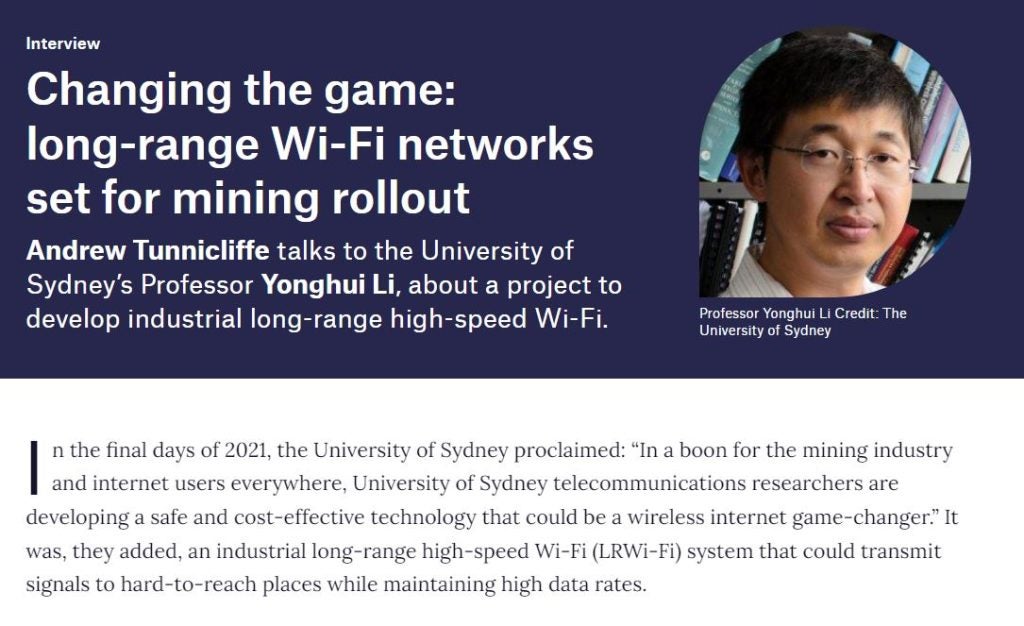
With more digitally-forward miners, the industry will be on cloud nine
A mine that utilises cloud technology is better placed for safety, sustainability and productivity, according to GlobalData analysis.
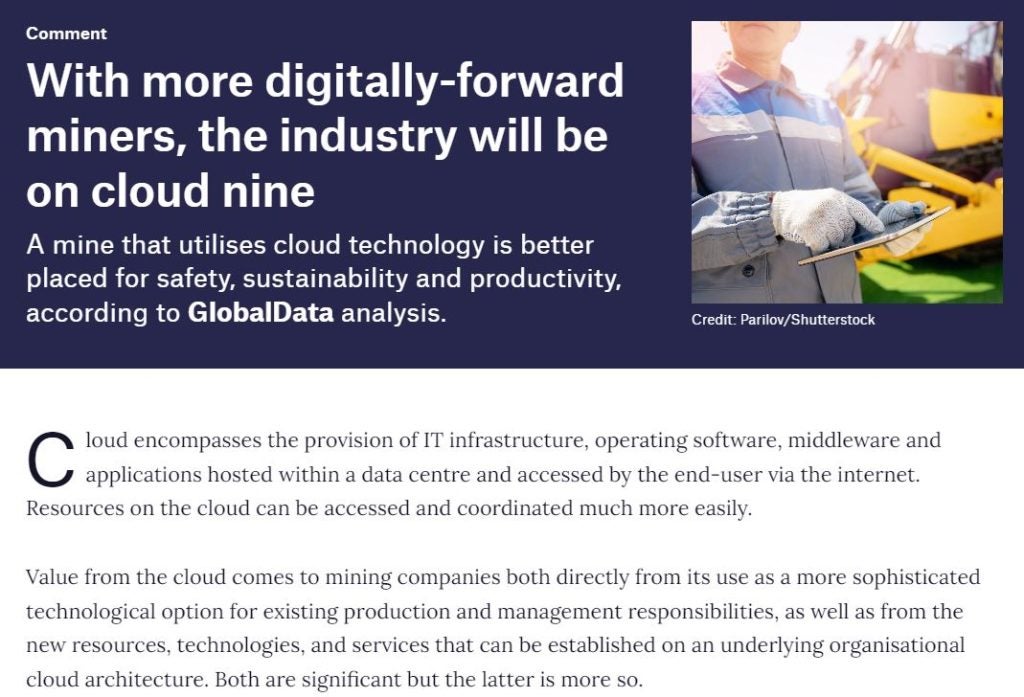
Next issue: digital transformation
As innovative technology becomes more widespread in the mining industry, it is not just companies, vehicles and whole mines that will benefit from new developments, but individual workers themselves. We profile a number of small, yet influential, technologies to improve worker safety and performance, and ask if they could be the future of mining.



